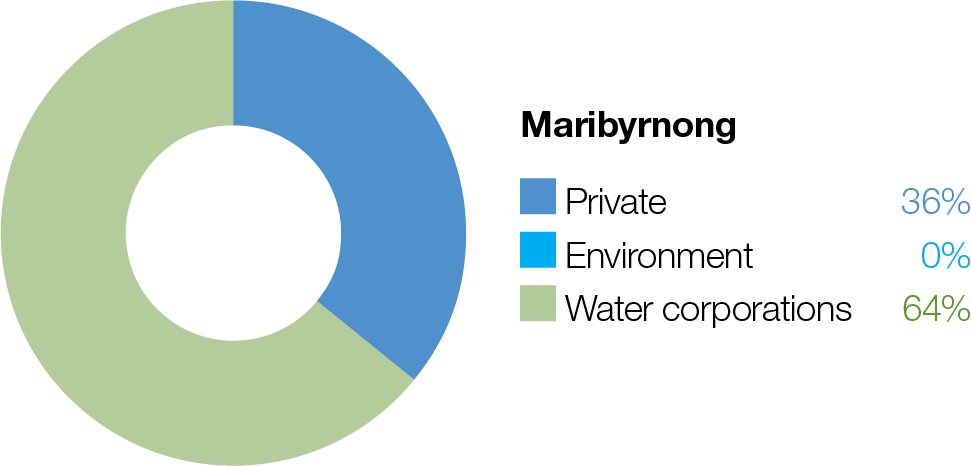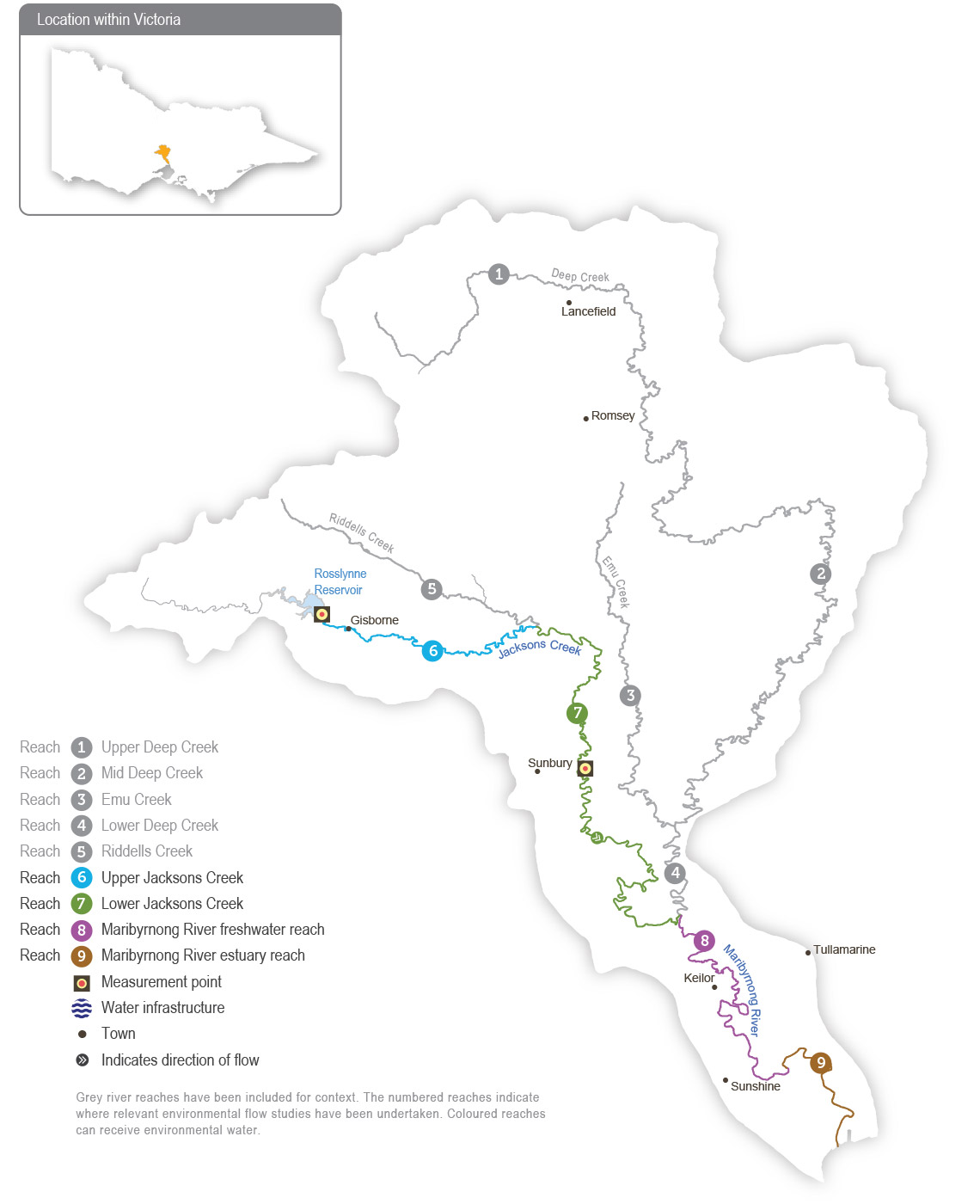Rosslynne Reservoir is in the upper reaches of Jacksons Creek near Gisborne and is the only major storage in the Maribyrnong catchment. The reservoir has a maximum release capacity of 20 ML per day under ideal conditions, which significantly constrains the environmental outcomes that can be achieved in the Maribyrnong system. Water for the environment is primarily used to support environmental outcomes in Jacksons Creek between Rosslynne Reservoir and the confluence with Riddles Creek (that is, delivery of water for the environment to reach 6, as shown in Figure 3.4.1). Jacksons Creek is a known groundwater-dependent ecosystem on the national Groundwater Dependent Ecosystems Atlas. This means ecological components in the system rely on groundwater for at least some period of time.
The VEWH does not hold an environmental entitlement in the Maribyrnong system, and it relies on opportunistic, temporary trade to meet demands. Melbourne Water (as diversion manager) and the VEWH work with local diversion licence holders to purchase unused water when it is available to support environmental outcomes. This arrangement is negotiated each year, is subject to water availability in the bulk entitlement and storage capacity, and only occurs with all parties’ agreement.

Proportion of water entitlements in the Maribyrnong system held by private users, water corporations and environmental water holders on 30 June 2020


